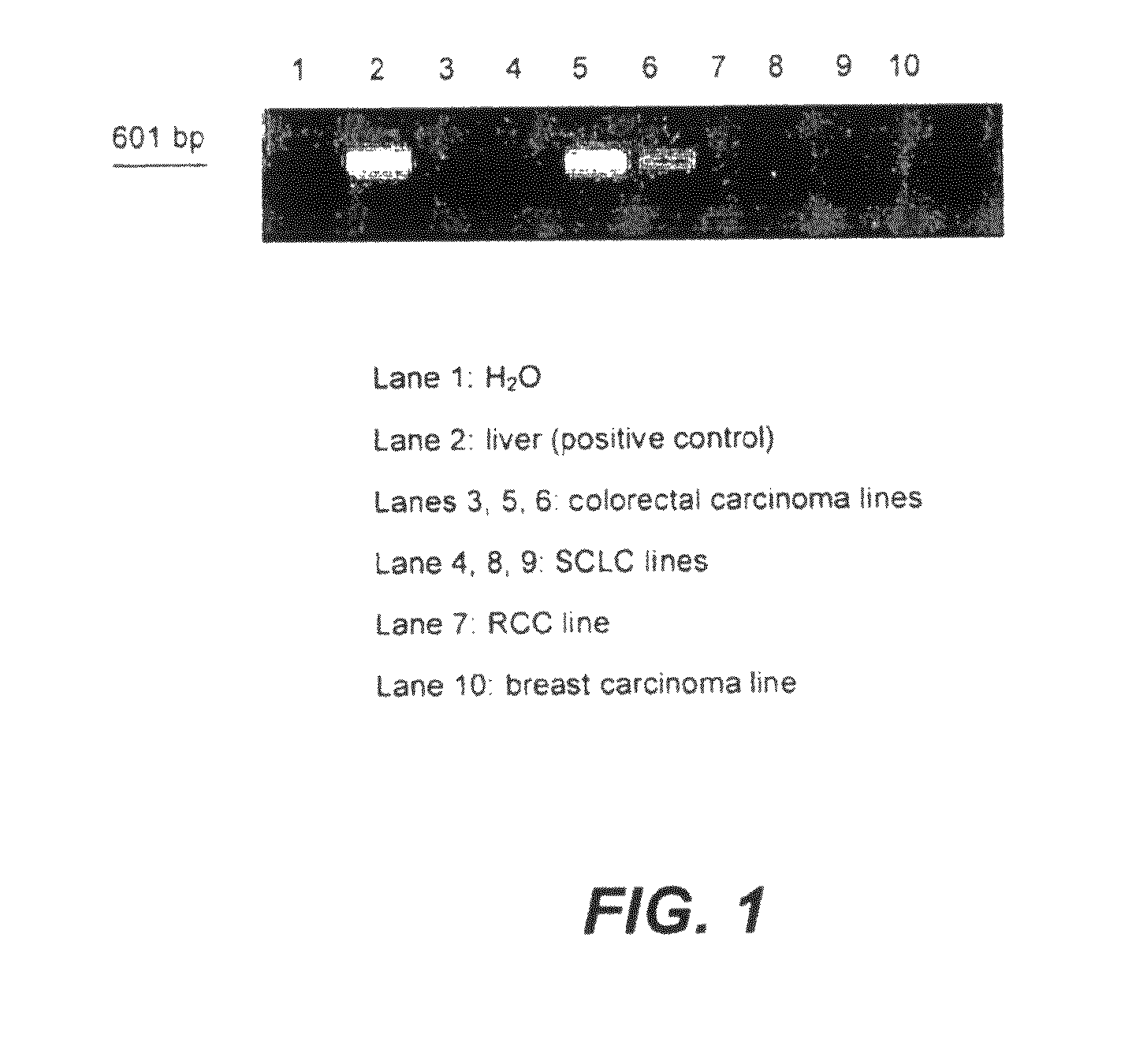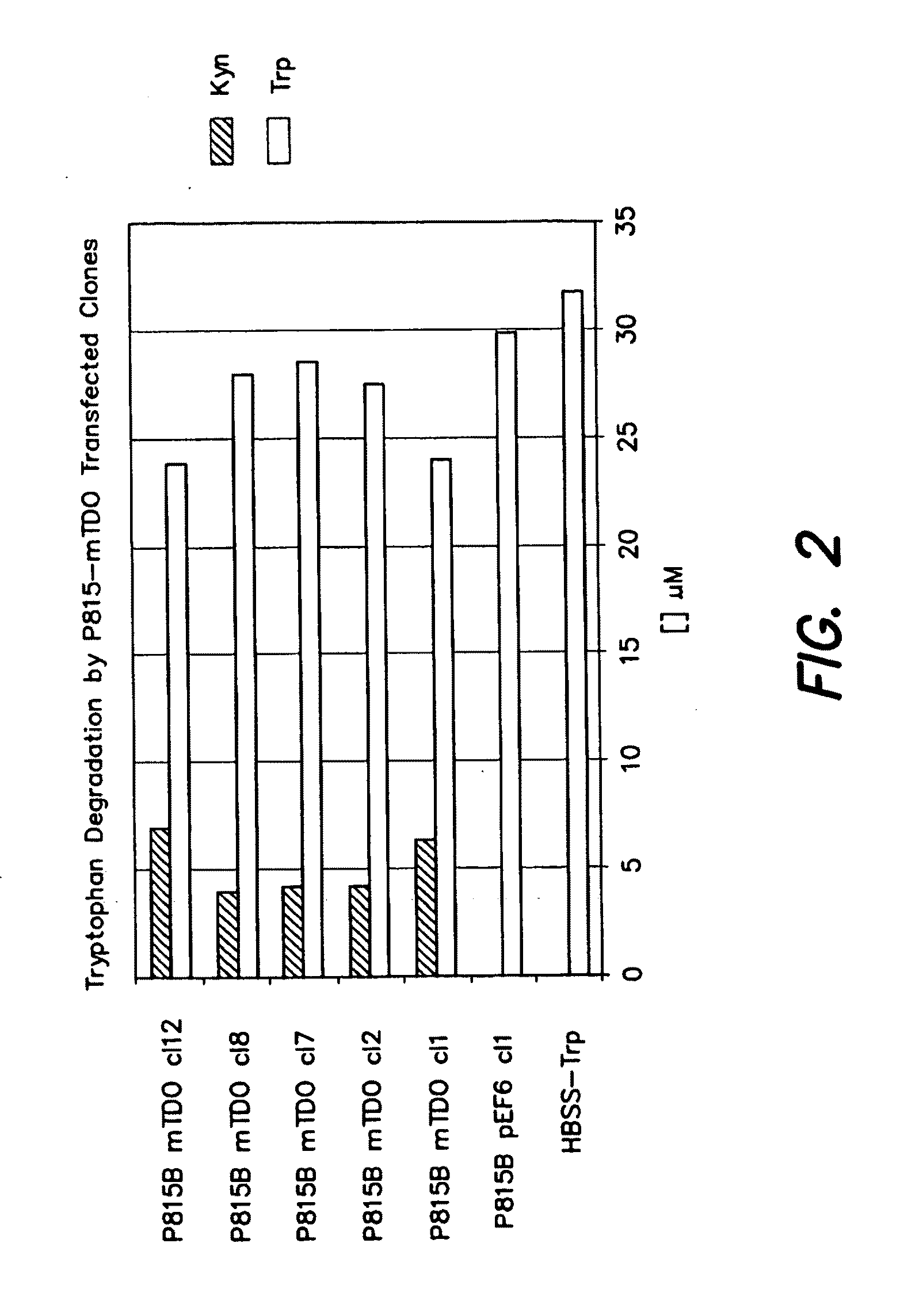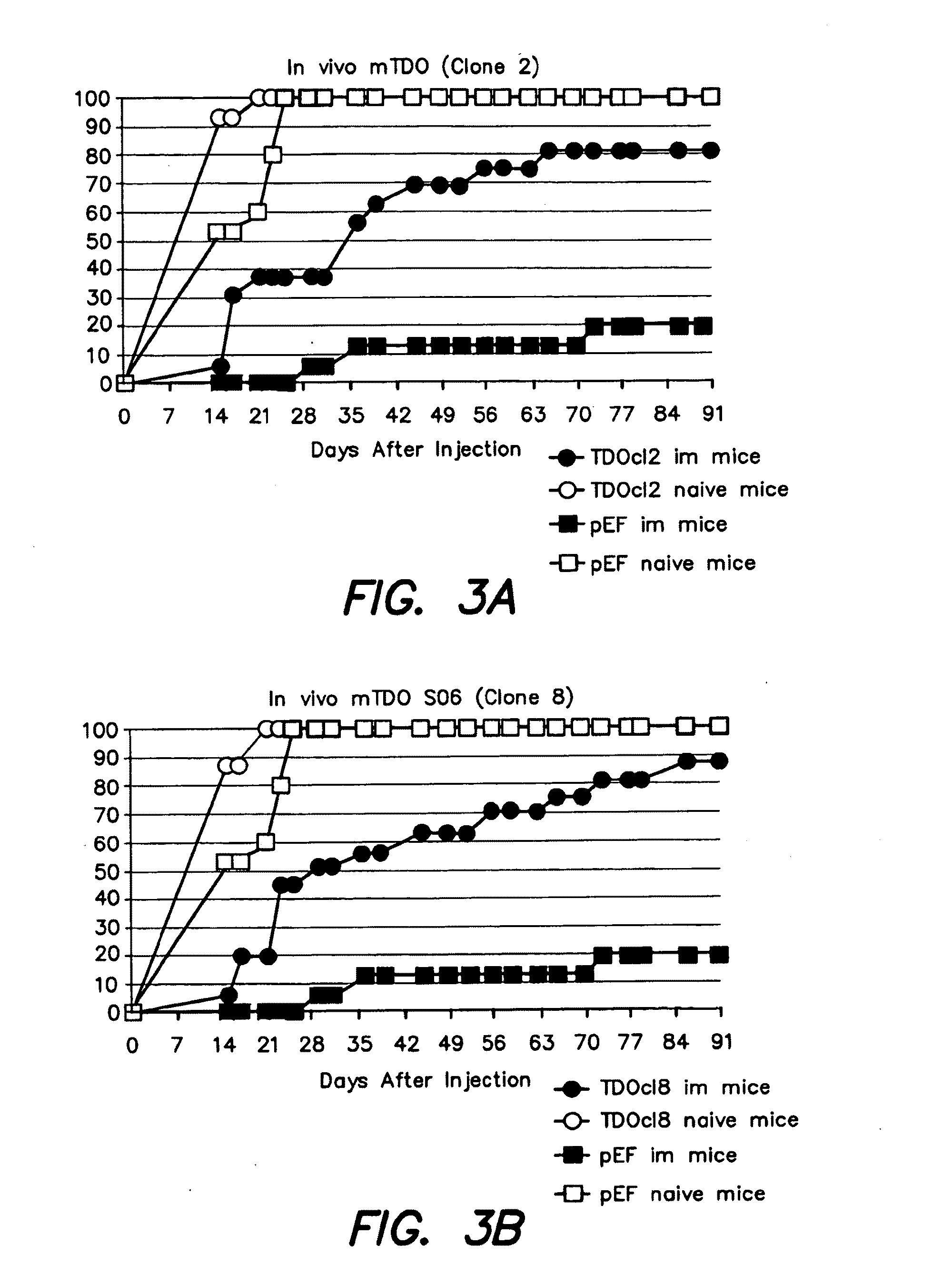Trytophan catabolism in cancer treatment and diagnosis
a technology of trytophan and cancer, applied in the field of trytophan catabolism in cancer treatment and diagnosis, can solve the problems of t lymphocyte survival and proliferation in the microenvironment, and achieve the effect of preventing tumor rejection and preventing tumor surveillan
- Summary
- Abstract
- Description
- Claims
- Application Information
AI Technical Summary
Benefits of technology
Problems solved by technology
Method used
Image
Examples
example 1
Detection of Tryptophan 2,3-dioxygenase (TDO2) in Cancer Cell Lines and Tumor Tissue
[0150]We studied the expression of TDO2 in tumor tissue and cancer cell lines by RT-PCR. We chose a set of primers matching the sequence of both human and mouse TDO2, as follows:
sense primer:5′-TTGGACTTCAATGACTTCAGAGA-3′(SEQ ID NO: 1)antisense primer:5′-TGCCCAGCATTCTGTGC-3′(SEQ ID NO: 2)
[0151]We used standard conditions for the reverse transcription, and the following conditions for the PCR amplification:
[0152]94° C. for 3 min
[0153]35 cycles (94° C. for 1 min / 56° C. for 1 min / 72° C. for 1 min)
[0154]72° C. for 10 min.
[0155]We used RNA from human liver as a positive control sample. Exemplary results are presented in FIG. 1. As indicated in Table 1, 40 tumor lines out of 63 tested scored positive for TDO2 expression, at various levels. Out of 66 tumor samples tested, 56 scored positive for TDO2.
TABLE 1Number of TDO2-positive out of the number of total celllines (left column) and samples (right column) t...
example 2
Generation of TDO2 Expressing Clones
[0156]To evaluate the effect of tumoral expression of TDO2 on tumor rejection, we used mouse tumor P815, which does not express TDO2 and can be readily rejected by mice previously immunized against the antigen encoded by P1A, a cancer-germline gene encoding the major rejection antigen of tumor P185 (Van den Eynde, B., B. Lethé, A. Van Pel, E. De Plaen, and T. Boon. 1991. The gene coding for a major tumor rejection antigen of tumor P815 is identical to the normal gene of syngeneic DBA / 2 mice. J. Exp. Med. 173:1373-1384; Brändle, D., J. Bilsborough, T. Rülicke, C. Uyttenhove, T. Boon, and B. J. Van den Eynde. 1998. Eur. J. Immunol. 28:4010-4019).
[0157]We transfected P815 cells with a plasmid construct encoding mouse TDO2 and we selected transfected clones expressing TDO2. We tested the TDO activity of the transfected clones by measuring their ability to degrade tryptophan and produce kynurenine (FIG. 2). A negative control clone transfected with an ...
example 3
TDO2 Expression Protects Tumor Cells from Immune Surveillance and Killing In Vivo
[0158]We then immunized DBA / 2 mice by injecting one million living L1210.P1A.B7-1 cells in the peritoneal cavity. Four weeks later, mice were injected with 4×105 cells of the P815 control clone (pEF) or with two transfected clones expressing TDO2 (clones 2 and 8).
[0159]Tumor progression was monitored (FIG. 3). All clones produced progressive tumors in naive (non-immunized) control mice. Most immunized mice rejected the control P815 cells. However, TDO-expressing P815 cells produced progressive tumors in the majority of immunized mice. These results indicate that TDO2 expression by tumor cells allows these tumor cells to resist immune rejection. We therefore predict that pharmacological inhibition of TDO2 will restore tumor rejection in such mice. Given the frequent expression of TDO2 in human tumors, inhibition of TDO2 in cancer patients should boost the clinical efficacy of cancer immunotherapy.
PUM
| Property | Measurement | Unit |
|---|---|---|
| time | aaaaa | aaaaa |
| pharmaceutical composition | aaaaa | aaaaa |
| concentrations | aaaaa | aaaaa |
Abstract
Description
Claims
Application Information
 Login to View More
Login to View More - R&D
- Intellectual Property
- Life Sciences
- Materials
- Tech Scout
- Unparalleled Data Quality
- Higher Quality Content
- 60% Fewer Hallucinations
Browse by: Latest US Patents, China's latest patents, Technical Efficacy Thesaurus, Application Domain, Technology Topic, Popular Technical Reports.
© 2025 PatSnap. All rights reserved.Legal|Privacy policy|Modern Slavery Act Transparency Statement|Sitemap|About US| Contact US: help@patsnap.com



